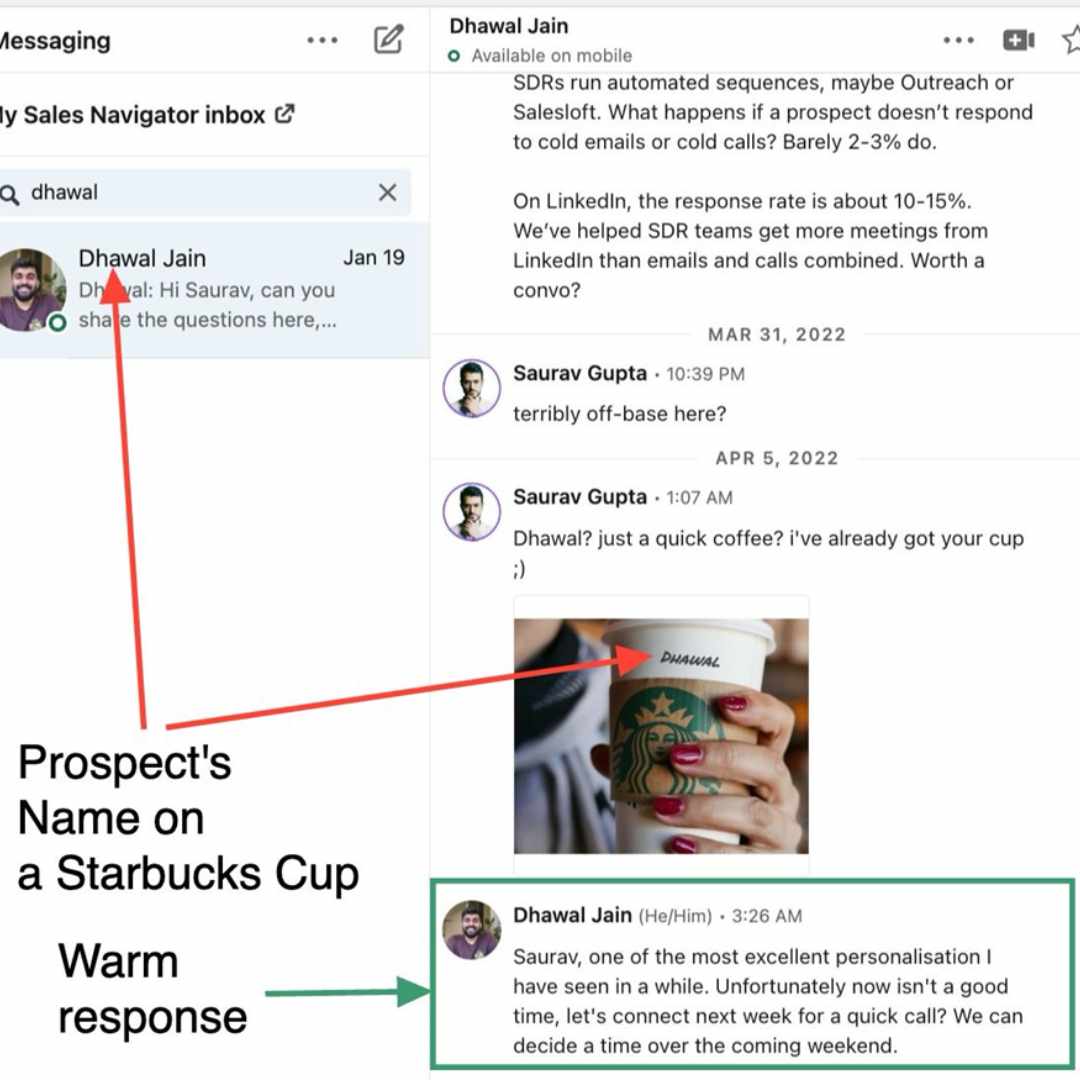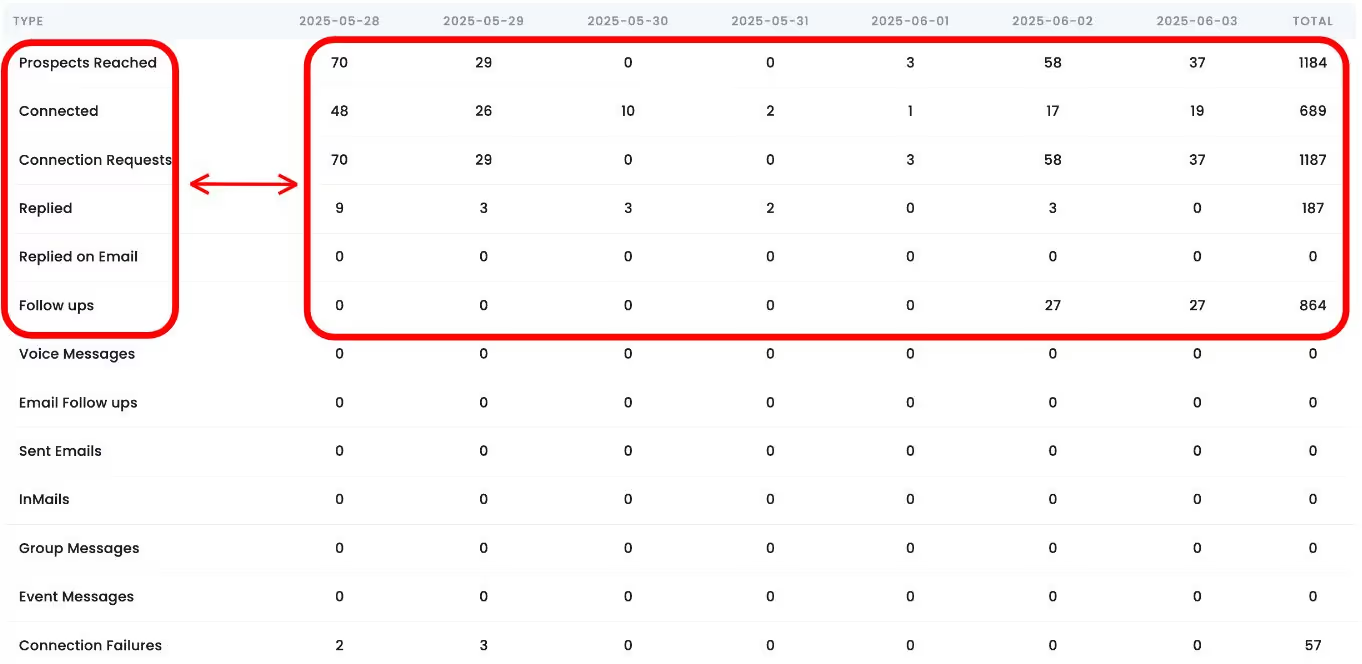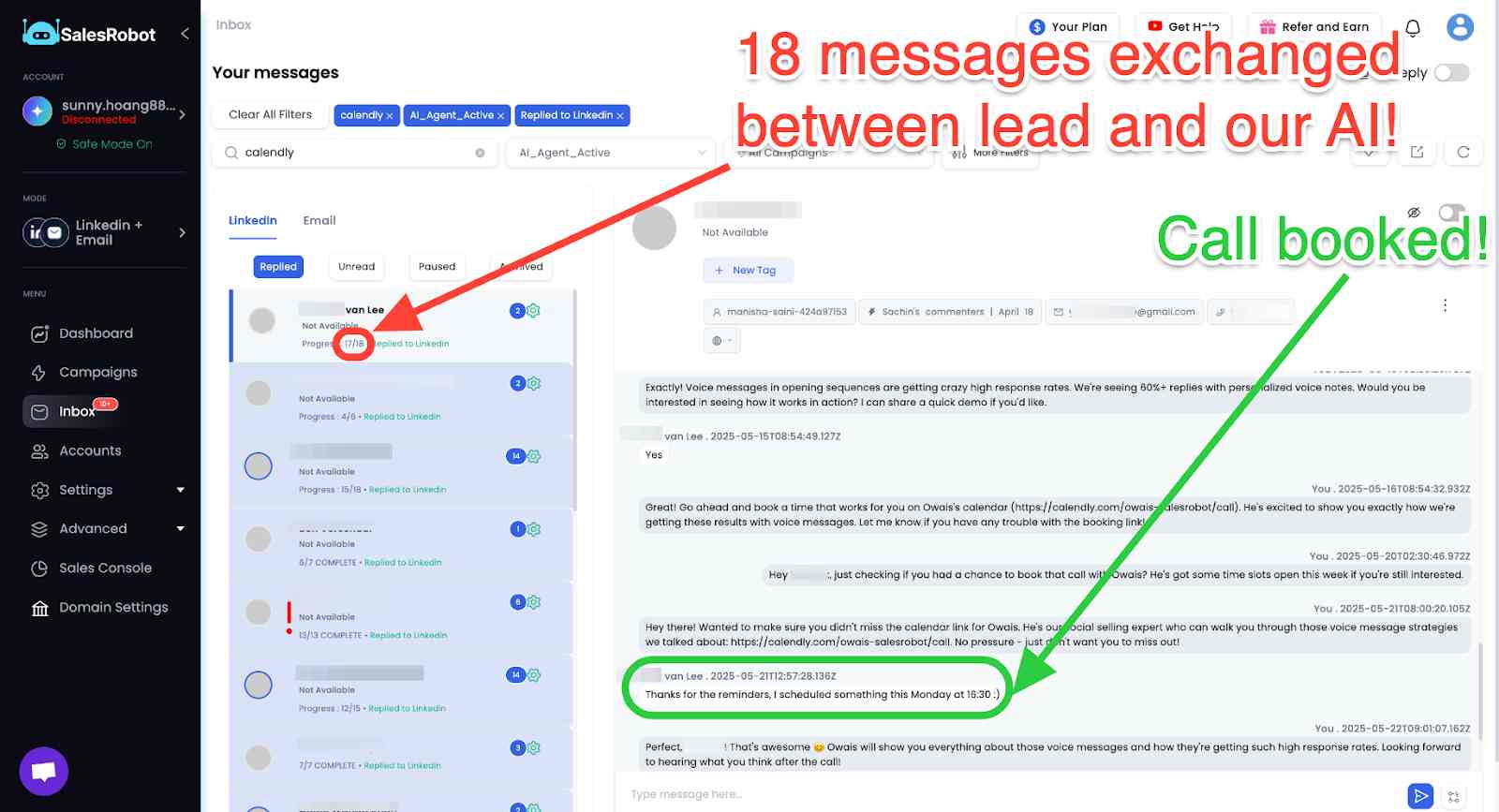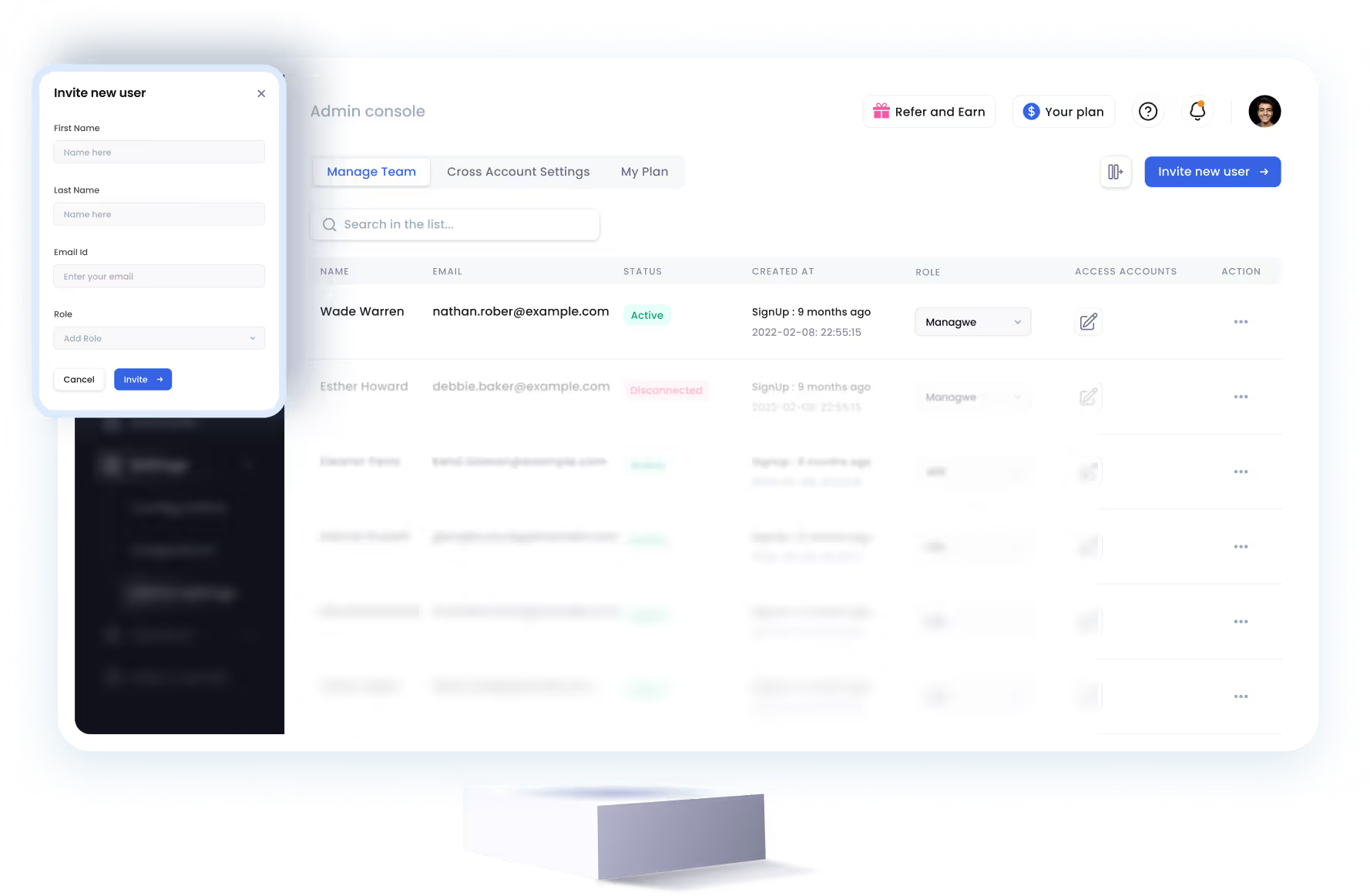If I randomly asked salespeople what's the biggest pain in the *** for them, I'd bet my one good office chair that most would say "wasting time on leads that go nowhere."
Why am I so confident?
What makes me willing to risk the only chair that doesn't leave my back screaming?

Simple: I've been there myself. I get it.
Random outreach doesn't work. You can't go chasing whatever leads appear before your eyes.
You need a better way. You need a plan. You need a system.
In other words, you need a sales prospecting plan.
It may sound like a mouthful, but it's basically a roadmap to finding people who actually want to buy from you.
It's a plan that:
- Points you toward the right targets
- Helps you reach out in ways that work
- Creates messages people actually respond to
- Shows you what's working (and what isn't)
I'm not going to give you theory. You need practical steps that work right now.
Your time is valuable. You can't spend all day prospecting and still handle everything else on your plate.
The approach I'll share works whether you're selling solo or leading a team.
Ready to stop wasting time on dead-end leads?
Let's build your prospecting plan that actually delivers results.
In this blog we'll cover:
- What is a Sales Prospecting Plan
- Why is it Important?
- What Are Different Types of Sales Prospecting?
- How to Plan Before Prospecting?
- What Are Some Common Problems in Sales Prospecting and How To Solve Them
- What Are The Sales Prospecting Strategies That Will Work in 2025
- How is AI Making Sales Prospecting Easy?
Cool, now that sounds like a plan. Let's begin, shall we?
What is a Sales Prospecting Plan?
Sales prospecting is finding and connecting with people who are actually likely to buy from you.
It's the first step in your sales process because it helps you pick who's genuinely interested in what you're selling.
Do this right, and you'll stop wasting time on people who will never buy.
So a Sales Prospecting Plan is a plan that helps you answer:
Who are you targeting? Clear definition of your ideal customer profile.
Where will you find them? The specific channels where your prospects hang out.
What will you say? Your messaging strategy that actually gets responses.
When will you reach out? At what time and how often should you outreach.
How will you track results? Your system for measuring what's working. And most importantly, what isn’t.
Why is a Sales Prospecting Plan Important?
It's like asking why you need to know what's on the test before you study.
Of course you need to know what you're dealing with!
When you have a sales prospecting plan:
You focus on the right people.
Why waste precious hours on someone who was never going to buy. A good plan points you to people who actually need what you're selling.
You get your time back.
Instead of chasing every lead that appears, you focus only on the ones that match your criteria. Suddenly you have hours back in your day.
Your pipeline stays full.
No more feast or famine. No more panic when your deals dry up. The system keeps working even when you're having an off week.
Success becomes repeatable.
When something works, you know exactly why it worked. Then you can do it again. And again. No more guessing.
Rejection hurts less.
Look I know, hearing "no" all day is exhausting. When you target the right people, you hear it a lot less often.
Your deals close faster.
Right person, right problem, right timing - it's amazing how quickly deals move when all three align.
Without a plan, you're just throwing stuff at the wall hoping something sticks.
Who’d want to do that?
Sales Prospecting Examples: What are the types of Sales Prospecting?
In general, you’d find these 3 types of Sales Prospecting
1. Inbound Sales Prospecting
This is when prospects come to you through your content or website.
Why you're struggling: Someone downloads your guide and you think "great lead!" But weeks pass with no conversion.
That's because inbound requires patience most salespeople don't have. You'll wait months building authority while your quota deadline looms.
The fix: When someone shows interest in your product/services, strike immediately, here’s a template:
"Hey [Firstname], noticed you downloaded our guide. Most people who do are struggling with [specific pain point]. Is that what you're facing too?"
2. Outbound Sales Prospecting
This is a direct outreach to prospects who haven't shown interest yet.
Why you're struggling: Your generic templates are being ignored. Each unanswered email is time you'll never get back.
The fix: Use research-backed personalization that triggers recognition:
"Hi [Firstname], saw your LinkedIn post about missing Q1 targets. Three agency founders I spoke with last week faced the same issue until they changed one thing..."
3. Social Media Sales Prospecting
This is connecting with prospects on platforms they already use.
Why you're struggling: You're spending hours on platforms where your buyers don't even exist.
The fix: For B2B, forget Instagram. Focus on LinkedIn and Twitter/X where decisions actually happen. Like, comment thoughtfully on your ICP’s posts, connect with them and then send them DMs that resonate with them.
How to do Sales Prospecting? Step-by-Step Process
Here's my exact process for finding prospects who actually buy:
Step 1: Know Your ICP (Ideal Customer Profile)
Define exactly who needs your solution and can afford it.
Ask yourself:
- Which industry actually needs what I sell?
- Where are these companies located?
- Who makes the buying decisions?
- What specific problems do they face daily?
- Can they afford my solution?
Without this clarity, you're burning hours on prospects who will never convert.
Step 2: Build a Target List
Got your ideal customer profile? Great. But that alone won't fill your pipeline.
Look, just because someone is a VP of Sales at a company making $5M doesn't mean they'll buy from you.
Most salespeople waste months chasing titles that look good but never convert.
You need deeper insights that show their actual likelihood to buy.
Here are some questions that your prospecting list needs to answer:
- What tech are they already using?
- Is revenue growing or shrinking?
- Where does this person sit in the decision chain?
Use Clay and Sales Navigator to filter data and reach a sharp, targeted list of prospects.
- Have they shown interest in solving problems your product fixes?
- Are they searching for solutions like yours RIGHT NOW?
- Have they visited your website in the past?
RB2B is great for knowing who’s checked out your website.
What keywords are they researching this week?
Step 3: Use That Data to Hyper-Personalize Your Outreach
Your prospects get 100+ sales messages daily. They ignore most of them.
Why would they respond to your template that sounds like everyone else's?
That "personalization" where you just swap in their name and company isn’t really fooling anyone.
Real personalization uses intent data to show you've done your homework.
It's the difference between:
"Hi Jane, wanted to discuss our sales software that increases revenue by 30%..."
And:
"Hi Jane, noticed you've been researching sales automation tools this week. Most VPs I talk to hit that breaking point when their team misses quota two quarters in a row. Is that what prompted your search?"
See the difference?
One sounds like every other pitch.
The other stops them cold because it addresses what they care about RIGHT NOW.
Step 4: Lead Nurturing
Ever sent a "perfect" outreach that got zero response?
Stings, doesn't it?
But the truth is most prospects won't respond to your first message.
Yet you're giving up after one try. That's leaving money on the table.
The top performers know persistence beats perfection.
Your competition quits too soon. Your edge is simple: follow up when they won't.
Here's how to do it right:
- Send your next message 2-3 days after the first. Any longer and they've forgotten you.
- Don't just use email again. Hit them on LinkedIn and phone too. Different people respond to different channels.
- Each follow-up needs a new value. Share an insight, case study, or article that helps them—even if they never buy.
- Stay polite but persistent. There's a fine line between follow-up and harassment. Don't cross it.
That deal you think is dead?
It might just need one more touch.
The difference between hitting quota and missing it is often in the follow-up game.
Are you quitting too soon?
What are the Biggest Sales Prospecting Plan Problems?
My team and I have frequently dealt with these issues. Thought I’d share how we overcame these challenges with you.
Problem 1: Getting a Good Target List
You could use Sales Navigator to filter leads by
- Which industries actually need what you sell
- What size companies can afford your solution
- Which geographies are most likely to buy from you
- Which job titles make the decisions
But Sales Nav, like most tools out there, isn’t perfect.
Imagine you're targeting online store owners with decent traffic (50k+ monthly visitors).
LinkedIn Sales Nav can't help you in this case.
There's no "e-commerce" industry filter.
No traffic volume filter either.
You're stuck guessing who matches your criteria.
Tools like Ocean.io can help in this situation.
Just drop in your best customer's website. The AI immediately finds lookalike companies with similar characteristics.
Instead of wasting time on prospects who vaguely match your criteria, you'll target businesses that mirror your most successful clients.
And yes, you can import your existing lead lists too.
Problem 2: Terrible Response Rates
Sending 100s of messages/emails and hearing crickets is soul-crushing.
Your messages are failing because they:
- Look like templates (even if you think they don't)
- Your emails have boring subject lines that scream "sales pitch inside"
- Talk about you instead of their problems
- Never reach the inbox due to poor deliverability
Problem 3: Getting Past Gatekeepers
Decision-makers are protected by layers of defenses designed to keep you out.
Break through by:
- Using multiple channels (email + LinkedIn + phone)
- Getting referrals from shared connections (the easiest way in)
- Engaging where they already spend time (industry groups, events)
Problem 4: Dealing With Constant Rejection
All those "no's" take a toll. I get it.
Here's how I handle rejection without losing my mind:
First, see each "no" as free market research. Ask why they're not interested - that feedback is precious.
Second, don't burn bridges. That "no" today might be ready in six months.
Third, stop selling and start helping. Share insights, resources, and ideas that make their job easier.
Fourth, automate cold messages and follow-ups. That way the bot can step in when you’re no longer emotionally available.
7 Sales Prospecting Strategies I Can’t Recommend Enough
I've tested countless approaches over the years. Most failed.
But a few strategies consistently deliver results. Here they are:
1. Screen Your Prospects Ruthlessly
Stop chasing everyone with a pulse and a budget.
Most salespeople waste hours on prospects who will never buy. That time adds up.
Before I launch any campaign, I ruthlessly qualify who gets my attention.
Nothing burns you out faster than pursuing dead-end leads.
2. Hit Multiple Platforms at Once
Relying on just email? That's why your pipeline is drying up.
Your prospects live across multiple platforms. Your outreach should too.
Think about it: how many sales emails did you ignore last week? But a thoughtful LinkedIn comment followed by a personalized email hits different.
3. Make Every Message Helpful, Not Pitchy
Nobody cares about your pitch. Harsh but true.
I've learned this the hard way: talking about features kills response rates.
Focus instead on their problems. Show you understand their pain better than they do.
The moment your message sounds like everyone else's, you've lost them.
4. Let Tools Handle the Grunt Work
Yes, you can do everything manually. And yes, you'll fall behind everyone who doesn't.
Automation isn't lazy—it's smart. It handles the repetitive tasks while you focus on what machines can't do: building relationships.
Tools should handle your research and follow-ups. You handle the conversations.
5. Never Stop Testing and Tweaking
The prospecting approach that worked last quarter might fail today.
Track everything. Test constantly. Adjust quickly.
Sometimes tiny tweaks create massive improvements.
6. Time Your Outreach Perfectly
Stop sending messages when they'll get buried in inbox chaos.
I've found that Tuesday and Wednesday mornings get almost double the responses of Friday afternoons.
And those 10 am emails perform miles better than ones sent at 4 pm.
Your perfect timing may differ by industry, but ignoring timing altogether is leaving responses on the table.
7. Track Buying Signals Like a Hawk
The best prospects are showing signs they're ready to buy right now.
New leadership, funding announcements, office expansions, and competitor complaints on social media – these are gold for your outreach.
Set up alerts for these triggers and pounce when they happen. A well-timed message to someone actively looking for solutions converts 3x better than cold outreach.
How to Automate Sales Prospecting
Let's be honest - building a prospecting plan from scratch is exhausting.
You're juggling too many tools. Wasting hours on manual tasks. And still not hitting your numbers.
SalesRobot changes everything.
Send Messages That Actually Get Responses
SalesRobot's Hyperise integration lets you create hyper-personalized messages at scale.

Your prospects get tailored outreach that feels like you spent hours on each one (when you didn't).
Know Exactly What's Working (And What's Not)
Flying blind with your outreach?
The detailed analytics dashboard shows you which messages convert and which fall flat. Automated reports keep your entire team updated on what's actually working.

Keep Your LinkedIn Account Safe
Automation without the risk.
While other tools get your account flagged, SalesRobot's safety features let you bypass LinkedIn's limits without getting banned.
No more stressing about account restrictions.
Handle The Entire Process In One Place
Stop jumping between platforms.
With SalesRobot, you can:
- Pull prospects from LinkedIn or import your own lists
- Enrich contact data automatically
- Send personalized emails and LinkedIn messages
- Set up intelligent follow-up sequences
- Let AI handle scheduling and reply management
- Connect with your CRM
AI Appointment Setter
SalesRobot can now manage your campaigns from start to finish.
It will send connection requests on your behalf, such as liking posts and comments.
It will also initiate conversations, handle objections, and attempt to schedule meetings on your calendar.

The best part? 24/7 support when things don't go as planned.
Your prospecting plan shouldn't require five different tools and endless manual work.
SalesRobot handles the whole process in one place.
Sounds good?
Want to give SalesRobot a try?
Take a free trial today and see how it works!
Heading 1
Heading 2
Heading 3
Heading 4
Heading 5
Heading 6
Lorem ipsum dolor sit amet, consectetur adipiscing elit, sed do eiusmod tempor incididunt ut labore et dolore magna aliqua. Ut enim ad minim veniam, quis nostrud exercitation ullamco laboris nisi ut aliquip ex ea commodo consequat. Duis aute irure dolor in reprehenderit in voluptate velit esse cillum dolore eu fugiat nulla pariatur.
Block quote
Ordered list
- Item 1
- Item 2
- Item 3
Unordered list
- Item A
- Item B
- Item C
Bold text
Emphasis
Superscript
Subscript


Wow your leads by cloning yourself and sending personalized videos and voice notes to each lead on LinkedIn.

If you don't reply to leads within 5 mins, your chances of converting them fall by 50%. Our AI replies on your behalf instantly! (and yes, you can train it)

Don't shoot in the dark. Get detailed analytics on what's working

SalesRobot allows you to invite other team members, so that they can add their LinkedIn Account, run outreach campaigns and get amazing results just like you.
Trusted by 4100+ innovative B2B sales teams and lead gen agencies

.avif)

.avif)




.avif)











